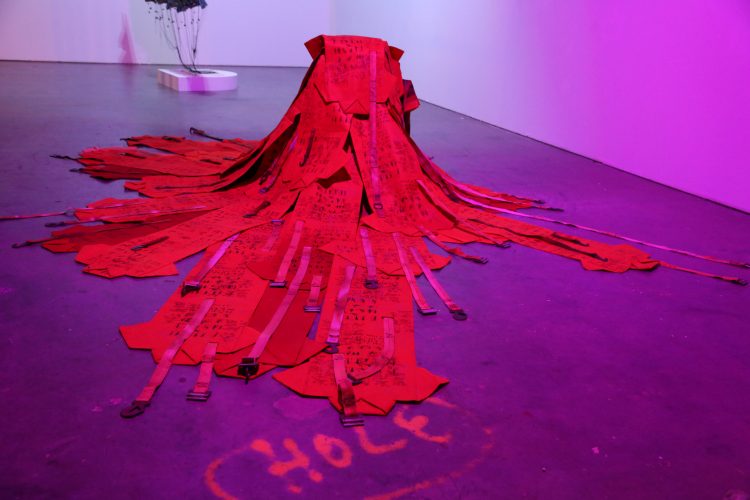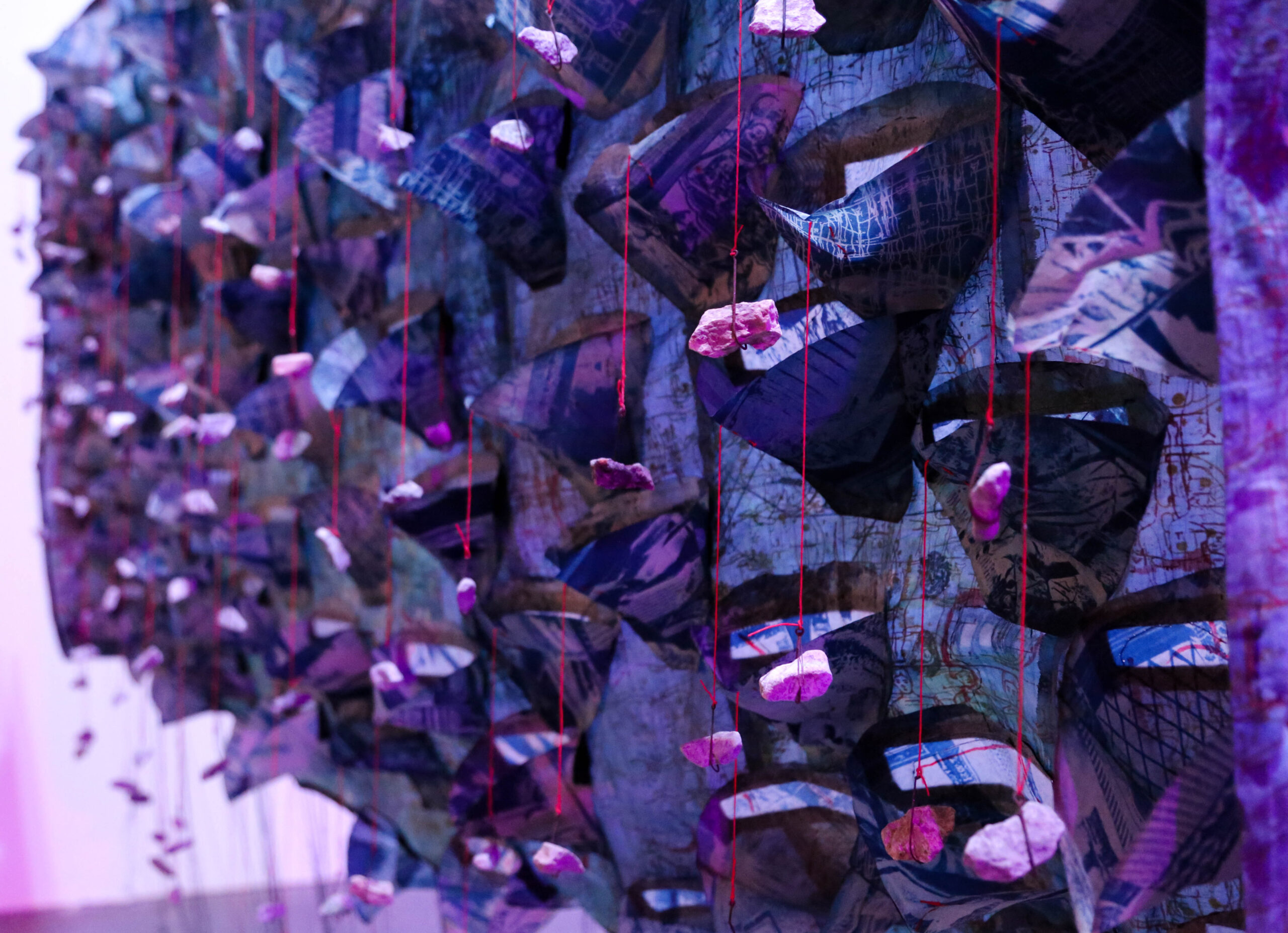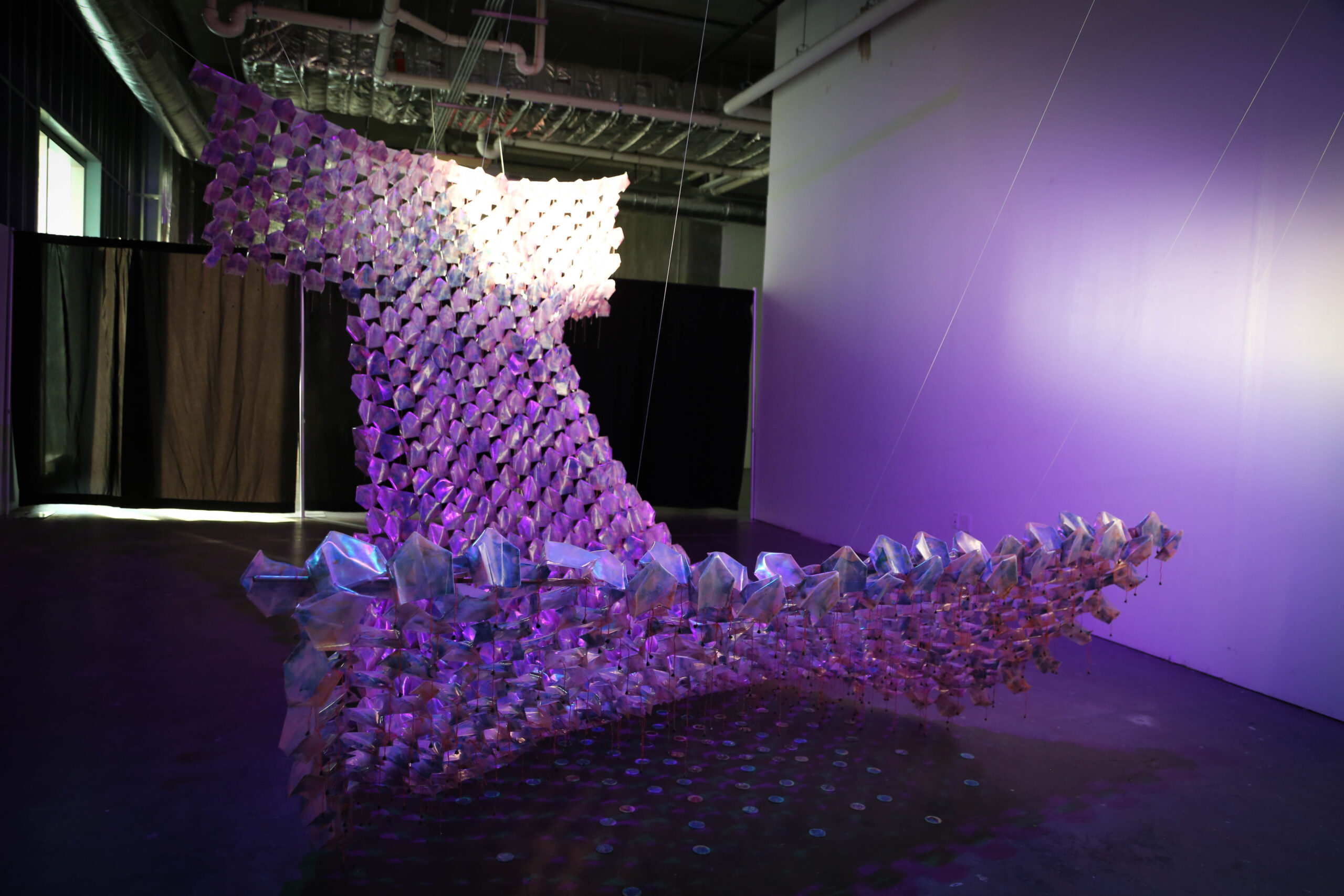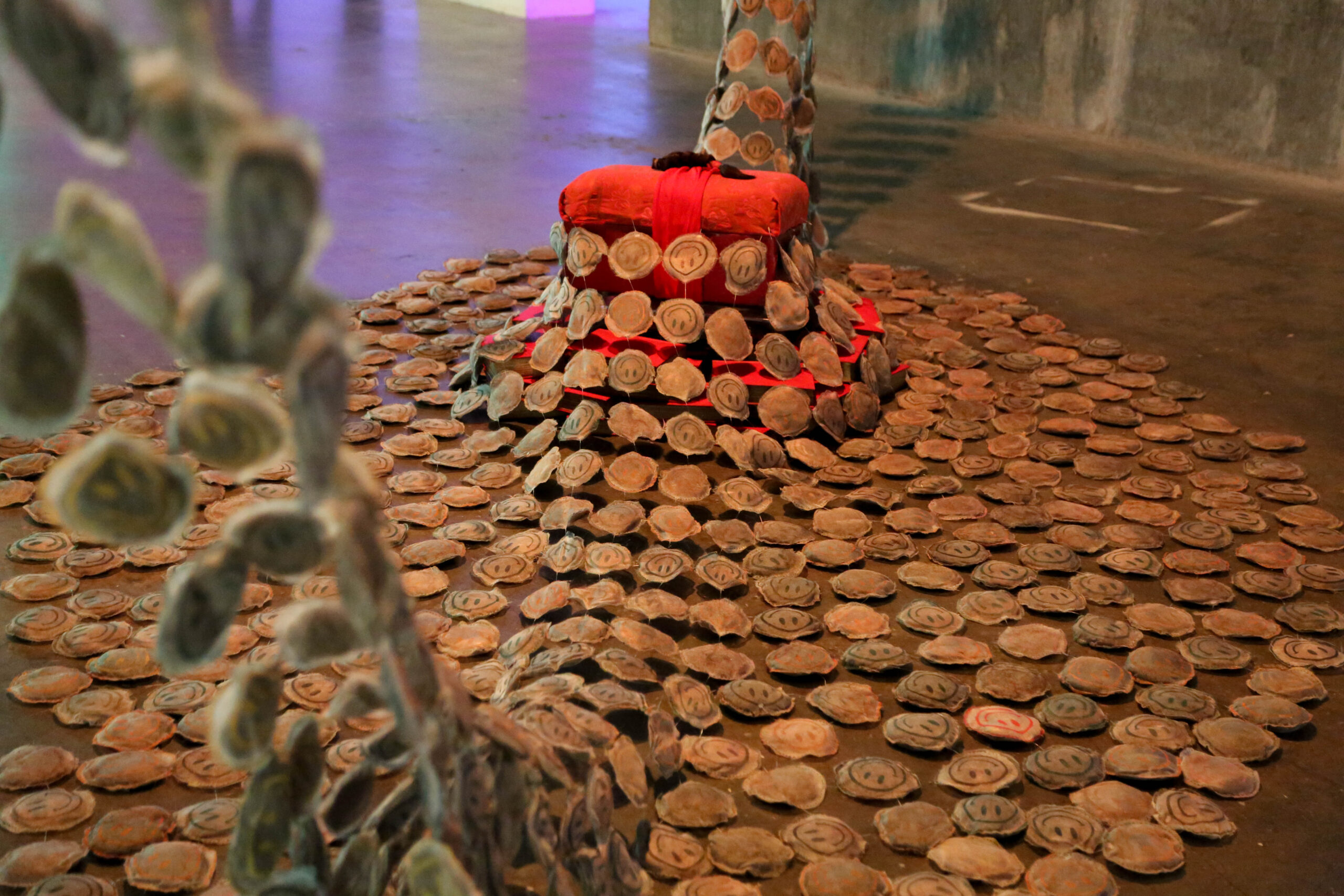
Visitors can find larger-than-life art installations with a variety of unexpected materials in a special project housed in the level-five expansion space at Mint Museum Uptown.
Known as The Noise We Make by artist Jan-Ru Wan, the installation is a study in art created with found materials from industrial sites. The installation was organized by independent curator and arts advocate Jonell Logan, who met Wan at the Greenhill Arts Center in Greensboro, N.C. after learning about her work. Logan says she was enthralled by the complexity and beauty of Wan’s creations, which use everything from human hair to coffee filters, chanting boxes to spoons.
The Noise we Make, on view until June 14 at Mint Museum Uptown, came to fruition a year later. Here’s a look at a few of the materials used to create Wan’s stunning works of art:
- Chanting boxes: The type of chanting boxes in Wan’s Kneeling (2019) are common in Taiwan. While there are several prayers recorded on the boxes, the one Wan selected was a chant for the bodhisattva (a sanskit mantra) of compassion. It is used mainly for praying for one who is suffering in life.
- Coffee filters: When Wan came to the United States 20 years ago, it was her first time seeing coffee filters. She was shocked that people would use them and dispose of them every day. The filters seen in her A Tangle of Hopelessness (2006-2019) also represent something more to her: the idea of filtration in our society—how we filter information, how it influences our individual realities. Wan began to see the coffee filters as symbols of individuals’ memory and mind. The two-sided nature of A Tangle of Hopelessness represents the act of filtering certain aspects of one’s life, and in turn, only seeing small pieces of others’ lives.

- Spoons: In Kneeling (2019), Wan uses previously manufactured items and manipulates them so that they stand in for new ideas. In this piece, the small spoons represent Buddha spoonfeeding people religion, not necessarily spirituality.
- Wax: Many of the pieces in the show incorporate wax—a substance Wan says reminds her a tears and skin. She also uses wax to freeze objects in time, creating a protective seal on the object.
- Pink plastic: In the titular piece, The Noise We Make (2019), the pink plastic used was originally found by the artist in the trash. Wan washed, cut, screen printed, folded and sewed each piece herself. Also used in Kneeling (2019), the magnificent size of each of the plastic pieces captures the audience’s attention and draws focus to the everyday, repurposed items.

- Bean sprouts: Grown in Wan’s own kitchen, bean sprouts are used repeatedly in the artist’s work. They represent the life cycle and Wan’s interest in impermanence.
- Human hair: In each of the small, silk, smiley-face-adorned pouches that Wan uses in her Residue of Separation (2019)there is a bundle of human hair. Collected from salon floors across the world—from the Netherlands to Taiwan to several cities in North Carolina — the hair represents physical separation to Wan. The prayer bench centered in the same piece was acquired in Charlotte, specifically for this installation.

About The Mint MuseumThe Mint Museum is a leading, innovative museum of international art and design committed to engaging and inspiring all members of our global community. The Mint Museum is dedicated to leadership in collecting, exhibiting, conserving, researching, publishing, interpreting, and sharing art and design from around the world.
These commitments are central to the museum’s core values of leadership, integrity, inclusiveness, knowledge, stewardship, and innovation, promoting understanding of and respect for diverse peoples and cultures.